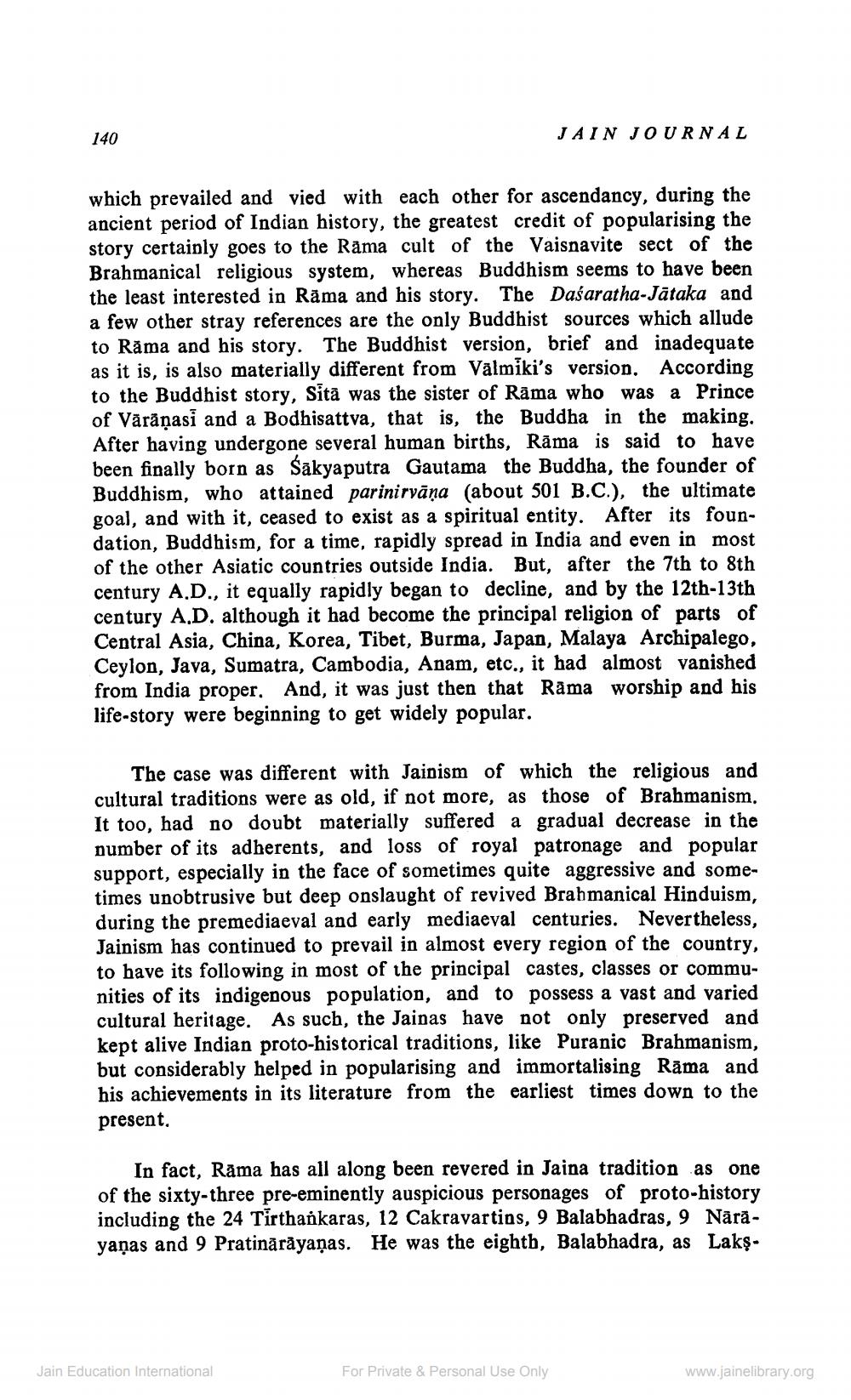Book Title: Jain Journal 1991 10 Author(s): Jain Bhawan Publication Publisher: Jain Bhawan Publication View full book textPage 4
________________ 140 which prevailed and vied with each other for ascendancy, during the ancient period of Indian history, the greatest credit of popularising the story certainly goes to the Rama cult of the Vaisnavite sect of the Brahmanical religious system, whereas Buddhism seems to have been the least interested in Rama and his story. The Dasaratha-Jātaka and a few other stray references are the only Buddhist sources which allude to Rāma and his story. The Buddhist version, brief and inadequate as it is, is also materially different from Valmiki's version. According to the Buddhist story, Sita was the sister of Rama who was a Prince of Varanasi and a Bodhisattva, that is, the Buddha in the making. After having undergone several human births, Rāma is said to have been finally born as Sakyaputra Gautama the Buddha, the founder of Buddhism, who attained parinirvāṇa (about 501 B.C.), the ultimate goal, and with it, ceased to exist as a spiritual entity. After its foundation, Buddhism, for a time, rapidly spread in India and even in most of the other Asiatic countries outside India. But, after the 7th to 8th century A.D., it equally rapidly began to decline, and by the 12th-13th century A.D. although it had become the principal religion of parts of Central Asia, China, Korea, Tibet, Burma, Japan, Malaya Archipalego, Ceylon, Java, Sumatra, Cambodia, Anam, etc., it had almost vanished from India proper. And, it was just then that Rama worship and his life-story were beginning to get widely popular. JAIN JOURNAL The case was different with Jainism of which the religious and cultural traditions were as old, if not more, as those of Brahmanism. It too, had no doubt materially suffered a gradual decrease in the number of its adherents, and loss of royal patronage and popular support, especially in the face of sometimes quite aggressive and sometimes unobtrusive but deep onslaught of revived Brahmanical Hinduism, during the premediaeval and early mediaeval centuries. Nevertheless, Jainism has continued to prevail in almost every region of the country, to have its following in most of the principal castes, classes or communities of its indigenous population, and to possess a vast and varied cultural heritage. As such, the Jainas have not only preserved and kept alive Indian proto-historical traditions, like Puranic Brahmanism, but considerably helped in popularising and immortalising Rama and his achievements in its literature from the earliest times down to the present. In fact, Rama has all along been revered in Jaina tradition as one of the sixty-three pre-eminently auspicious personages of proto-history including the 24 Tirthankaras, 12 Cakravartins, 9 Balabhadras, 9 Nārāyanas and 9 Pratinārāyaṇas. He was the eighth, Balabhadra, as Laks Jain Education International For Private & Personal Use Only www.jainelibrary.orgPage Navigation
1 2 3 4 5 6 7 8 9 10 11 12 13 14 15 16 17 18 19 20 21 22 23 24 25 26 27 28 29 30 31 32 33 34 35 36 37 38 39 40 41 42 ... 58
